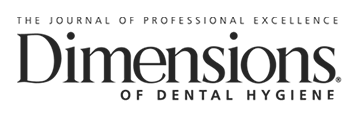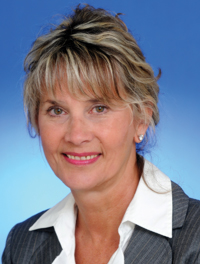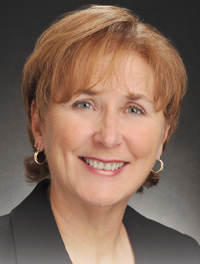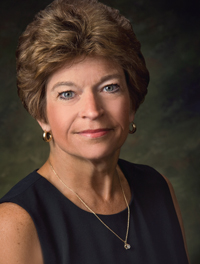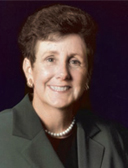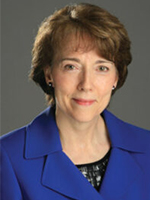 Marilynn Rothen, RDH, MS, is a clinical professor at the University of Washington (UW) School of Dentistry in Seattle. She teaches dental hygiene students to provide preventive and restorative oral healthcare to children ages 0 to 5, and she directs the Master of Science in Oral Health Sciences Program for dental hygienists. With nearly 30 years of experience conducting research studies and clinical trials, Rothen is also the manager of the school’s Clinical Dental Research Center. As a clinician, she has provided dental hygiene care to patients with extreme dental fear for 30 years. The 2015 president of the Washington Dental Hygienists’ Association, Rothen also serves at the national level for the American Dental Hygienists’ Association on the Research Advisory Group and is a member of the International Association for Dental Research.
Marilynn Rothen, RDH, MS, is a clinical professor at the University of Washington (UW) School of Dentistry in Seattle. She teaches dental hygiene students to provide preventive and restorative oral healthcare to children ages 0 to 5, and she directs the Master of Science in Oral Health Sciences Program for dental hygienists. With nearly 30 years of experience conducting research studies and clinical trials, Rothen is also the manager of the school’s Clinical Dental Research Center. As a clinician, she has provided dental hygiene care to patients with extreme dental fear for 30 years. The 2015 president of the Washington Dental Hygienists’ Association, Rothen also serves at the national level for the American Dental Hygienists’ Association on the Research Advisory Group and is a member of the International Association for Dental Research.
Q. Discuss a pivotal event in your life that shaped your professional aspirations.
A. Graduation from dental hygiene school took me straight in to a periodontics practice. I had excellent mentorship from the senior hygienist in the practice, but despite being able to administer local anesthesia and nitrous oxide and trying to be kind and gentle, I felt that most patients were anxious about receiving the dental care we provided. Something was lacking in our ability to help patients cope. When I returned to Seattle after working in Switzerland for about 6 years, I was ready for a change. I took a position as a clinical instructor in a community college dental hygiene program. One day a psychologist from the University of Washington School of Dentistry who was giving a guest lecture on patient management techniques used in the Dental Fears Research Clinic (DFRC) shared that the clinic was looking for an additional hygienist. After meeting with the dentist and psychologist who had established the DFRC, I knew I wanted to learn the techniques they had developed for treating fearful dental patients. I went through a training period where I learned about studies they had conducted to understand the development of dental fear and their research on strategies and techniques patients and clinicians could use for managing dental fear. This was evidence-based practice before the term had even been coined. All of the providers in the clinic—psychologists, dentists, and the dental hygienist—were heavily involved in research and their excitement for their work was palpable. Imagine being able to contribute to the generation of new knowledge that would have an immediate effect on the patients you treated. Seeing the link first-hand made me want to contribute if the opportunity presented itself and it did about 2 years later. A new dental research center was being established in the school and one of our dental colleagues who had worked in the DFRC asked me to be the dental hygienist on his 5-year grant studying acute and chronic drug tolerance through the use of nitrous oxide. With that, my 30 year career in clinical dental research was born.
What advice do you have for dental hygienists working in clinical practice who are interested in research?
A. Our careers in dental hygiene are a path with opportunities that present themselves along the way. There are two aspects to this: one is to take a path where opportunities are likely to arise and the other is to recognize them when they do and to be open to taking advantage of them.
Where are opportunities to become involved in research likely to arise? Much of the funding for research goes to academic institutions, comes from foundations, or takes place in the corporate “research and development” area. Many dental hygienists, interested in enlarging their horizons, are seeking advanced degrees to complement their dental hygiene education, and this can make them eligible for new positions such as those in research. It can be an excellent way to create a network of resources to learn about potential opportunities and the additional credentials can also put you in a position to seek research funding. If you feel there is a gap in our knowledge, something lacking in our ability to treat patients, an area that you are interested in or feel passionate about, read up on it. Who is doing work in that area? What companies make or produce the kind of products or services that might be related? What foundations are working to address the challenge? Many of these people gather at regional or national meetings such as the American Dental Hygienists’ Association Annual Conference to present their work and network with colleagues. Your aim should be to become known to the people working in your area of interest.
The second aspect is to recognize an opportunity and to be open to taking advantage of it. An opportunity might begin as teaching part-time, working in a related area, or volunteering with a program, all the while the people who can open doors for you are getting to know you. When the offer comes to take on something new, it can be intimidating to jump in, and you may not think you are prepared for it. My experience is that people who ask you to take on a new role have confidence that you have the qualities needed and they are ready to help you succeed. Research is becoming more and more team-based and interdisciplinary. As the profession of dental hygiene gains recognition and with the increasing awareness of the contribution of oral health to systemic health, the value of dental hygienists to the research team is increasingly appreciated.
